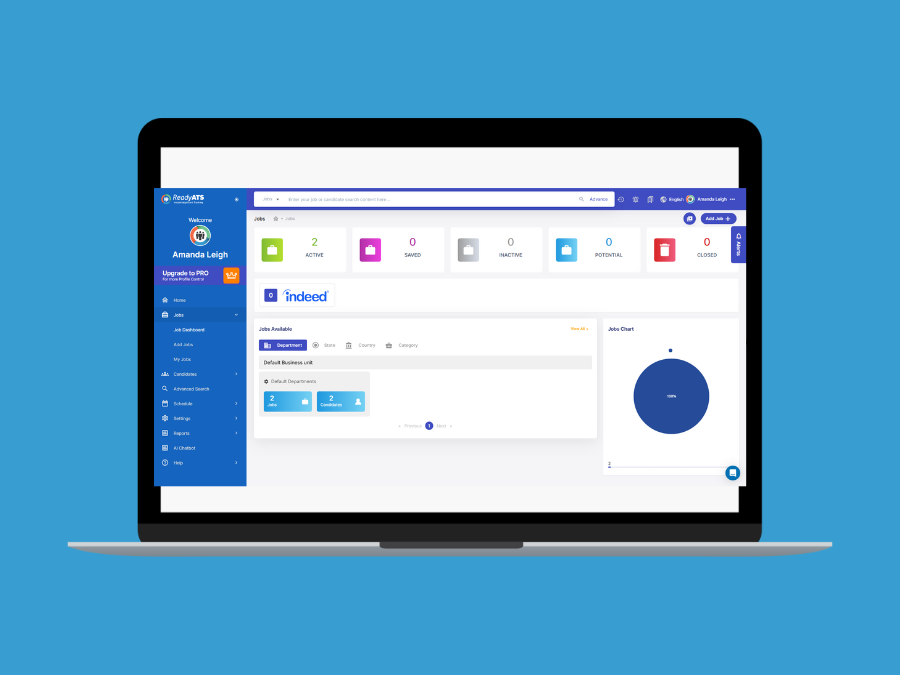In 2024, the rapid evolution of technology has transformed how companies attract, evaluate, and hire talent. Applicant Tracking Systems (ATS), powered by artificial intelligence and data-driven analytics, are playing a pivotal role in maximizing candidate pipelines. Companies are leveraging these systems to streamline hiring processes, improve candidate engagement, and ensure they can compete in a tight labor market. Below is an exploration of the ways organizations are utilizing ATS in 2025 to build robust talent pipelines.
1. Automated Resume Screening and Enhanced Matching
Modern ATS use advanced AI algorithms to analyze resumes and match candidates with open roles:
• Semantic Search: AI-powered ATS now go beyond keyword matching, analyzing candidate skills, experience, and context to identify the best fit.
• Skill Gap Analysis: ATS suggest upskilling opportunities to candidates or flag them for future opportunities based on their potential.
• Bias Reduction: AI tools work to reduce unconscious bias by anonymizing resumes during initial screening, improving diversity in the pipeline.
2. Integration with Candidate Relationship Management (CRM)
In 2025, ATS are integrated with CRM tools to foster long-term relationships with candidates:
• Talent Pools: ATS maintain databases of past applicants and passive candidates, enabling companies to reach out for new opportunities.
• Personalized Outreach: With AI, systems can send tailored messages to engage candidates based on their profiles and past interactions.
• Engagement Metrics: ATS track communication data (e.g., email opens and clicks), helping recruiters prioritize highly engaged candidates.
3. AI-Driven Candidate Sourcing
ATS systems are enhancing sourcing capabilities by actively searching for candidates across platforms:
• Social Media and Job Boards Integration: ATS automatically scan platforms like LinkedIn, GitHub, and niche job boards to find potential candidates.
• Predictive Analytics: AI predicts candidate availability and interest levels, allowing recruiters to reach out at the right time.
• Chatbots for Initial Interaction: Integrated chatbots communicate with candidates on platforms like WhatsApp or via SMS to gather information and answer queries.
4. Streamlined Application Processes
Simplifying the application process is a key priority to keep top talent engaged:
• One-Click Applications: ATS integrate with platforms like LinkedIn for seamless application submissions.
• Mobile Optimization: In 2025, applications are designed to be mobile-first, catering to candidates who prefer smartphone interactions.
• Progress Transparency: ATS notify candidates about the status of their applications in real-time, improving their overall experience.
5. Predictive Analytics for Pipeline Forecasting
ATS use predictive analytics to maximize the efficiency of candidate pipelines:
• Demand Planning: ATS analyze historical data to predict future hiring needs, allowing companies to proactively source candidates.
• Time-to-Hire Estimation: By studying pipeline metrics, ATS suggest timelines for hiring to ensure recruiters meet their goals.
• Quality of Hire Predictions: AI assesses a candidate’s potential to succeed within the company, reducing turnover and improving long-term ROI.
6. Improved Collaboration and Communication
ATS platforms facilitate collaboration between hiring teams and candidates:
• Integrated Communication Tools: Teams can share feedback and make collective decisions directly within the ATS.
• Scheduling Automation: ATS systems integrate with calendar apps, automating interview scheduling based on availability.
• Onboarding Integration: Once hired, candidates’ information seamlessly transfers to HR systems for a smooth onboarding process.
7. Focus on Candidate Experience
Enhancing the candidate experience is crucial for companies in 2025 to remain competitive:
• Real-Time Feedback: ATS provide automated but personalized feedback to candidates, improving transparency and engagement.
• Gamification: Interactive assessments and games integrated into the ATS create engaging and insightful candidate evaluations.
• AI-Driven Assessments: These tools provide immediate scoring and suggestions for next steps, making the process faster and more enjoyable for candidates.
8. Data-Driven DEI Initiatives
Diversity, equity, and inclusion (DEI) remain a priority, and ATS play a critical role in driving these efforts:
• Diversity Analytics Dashboards: Companies use ATS to track hiring trends and ensure diverse representation in candidate pipelines.
• Targeted Sourcing: ATS recommend outreach strategies to underrepresented groups based on demographic data.
• Inclusive Job Descriptions: AI tools flag biased language in job postings and suggest improvements.
Our Take-away
In 2025, Applicant Tracking Systems have become more than just tools for managing applications—they are strategic partners in optimizing the candidate pipeline. Through AI-driven sourcing, streamlined applications, predictive analytics, and a focus on candidate experience, companies are maximizing their hiring potential. These advanced systems not only improve efficiency but also foster stronger connections with candidates, ensuring organizations can attract and retain top talent in a competitive landscape.
Are you hiring this holiday season? Join ReadyATS today and see how an ATS can streamline and simplify your hiring process!
AEP III _ 12/11/2024



